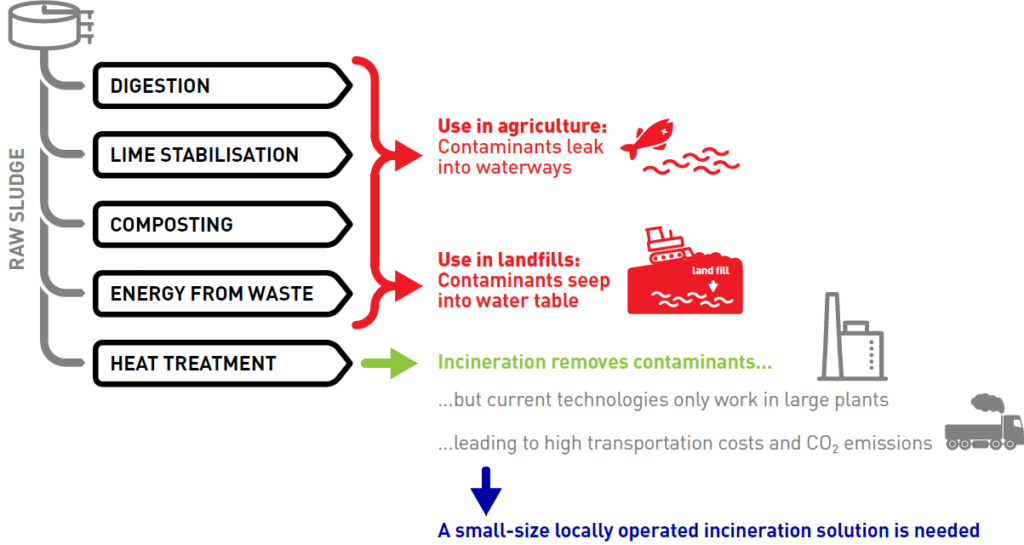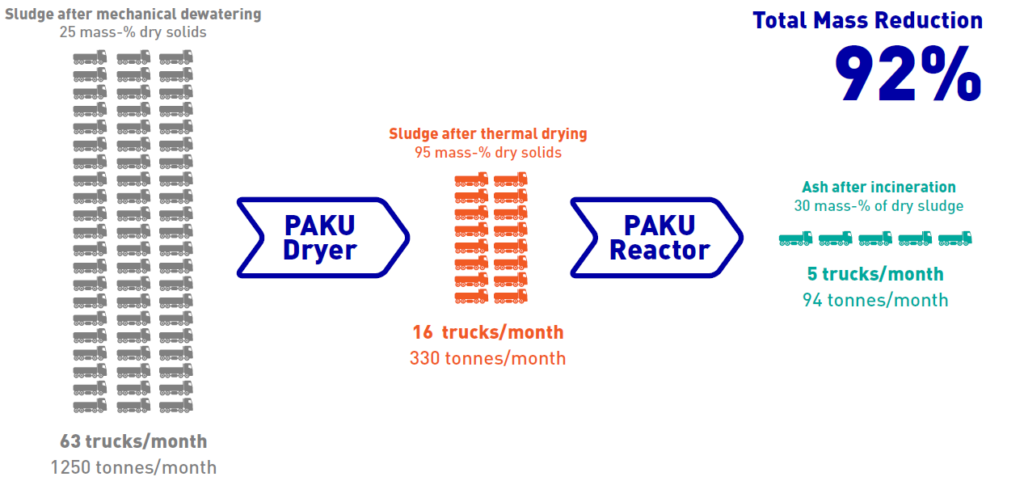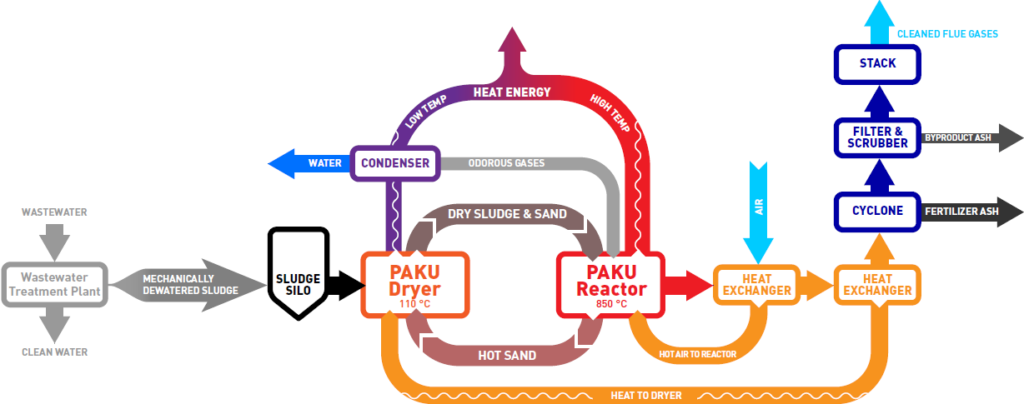The Background
All the organic and inorganic compounds extracted during wastewater treatment in municipal wastewater treatment plants are concentrated in sewage sludge. Modern wastewater treatment plants are becoming increasingly efficient in catching these unwanted compounds, and larger amounts of contaminants end up in sewage sludge. These contaminants are hazardous to the environment and human health. Municipal sewage sludge contains different types of hazardous pollutants, such as:
-
Bacteria and viruses
-
Pathogens
-
Drug residues
-
Microplastics
-
Heavy metals
Current situation
| In addition to the unwanted compounds, sewage sludge contains valuable plant nutrients, such as phosphorus and nitrogen. These nutrients can be recovered and recycled for fertilizer purposes, but the contaminants must be first removed. However, with current sludge treatment technologies such as composting and biogas production, these pollutants cannot be eliminated. Instead, the contaminants seep back into the environment from landfills, which causes serious environmental problems.
In our solution, sewage sludge is treated thermally at a constant temperature of 850 ˚C to ensure the complete destruction of unwanted organic compounds. Inorganic heavy metals that cannot be thermally eliminated are separated from the residual ash. As a result, the quantity of the sludge is minimized, and the hygienic and nutrient-rich ash can be used as a fertilizer in forestry or farming.
|
 |
Transport emission reduction
| Municipal sewage sludge generated in wastewater treatment plants has a high-water content and must be mechanically dewatered before transport to further treatment. However, even after mechanical dewatering, the dry solids content is still very low, typically below 30%. Transporting large amounts of water will result in unnecessary costs and emissions.
Due to modular design principles, our facility is compact can be located close to the wastewater treatment plant. This eliminates the need for sludge transport. After thermal treatment, the remaining ash with recycling potential corresponds to only 8 % of the original mass, which results in reduced costs and emissions.
|
 |
Endev-process
| In our solution, mechanically dried sludge is first fed into a circulating fluidized bed dryer where it dries to over 95% dry matter content. Then, the dried sludge is combusted at 850 °C in a circulating fluidized bed reactor. The flue gases formed in the reactor are cleaned by filtering and scrubbing before releasing them into the atmosphere. The ash separated from the flue gases is stored for further processing.
The process is self-sufficient in terms of energy, enabling standalone operation without supplementary fuels, and providing excess heat that can be utilized, e.g., as district heat. Thermal energy is recovered from the reactor unit and by condensing the water vapor formed in the dryer.
|
 |
ENDEV-technology is the most affordable commercial solution for the thermal treatment of sewage sludge
CONTACT US
BENEFITS OF THE ENDEV PROCESS
- Simple, compact, and cost-efficient design
- Efficient recovery of energy and nutrients
- Continuous and fully automated operation
- Eliminates pollutants that are hazardous to the environment
- Reduces costs and emissions by minimizing the need for sludge transportation
- Autothermal operation, no additional fuels required
- Handles both non-digested sludges and residues from biogas production
|
Future options
- Nitrogen recovery from condensed drying fumes
- Electricity generation
- Energy and nutrient recovery from industrial waste streams such as pulp mills and bioethanol production sites
|


